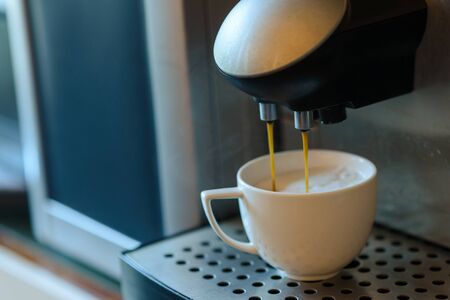Introduction to the British Coffee Journey
Coffee has woven its way into the fabric of British culture over centuries, evolving from a novelty drink in 17th-century coffee houses to a daily ritual enjoyed across the nation. While tea may have long held the crown as Britains beverage of choice, the rise of coffee culture is impossible to ignore. This journey has not only influenced what Britons drink but also how they prepare it. As tastes matured and global influences seeped in, so too did the demand for better, more convenient ways to brew that perfect cup. The evolution of coffee gear—from simple, hand-powered devices to today’s sophisticated electric machines—reflects this ongoing transformation. Understanding the British relationship with coffee sets the stage for exploring how innovative gadgets and brewing methods found their place in homes, cafés, and workplaces across the UK.
2. Early Hand-Powered Tools: Tradition in a Teacup Society
In Britain, where the ritual of tea drinking has long shaped social habits and kitchen cupboards alike, coffee’s journey was initially a modest one. Despite the nation’s reputation as a tea-drinking stronghold, early coffee enthusiasts quietly carved out their own niche using an array of hand-powered tools. These devices were essential for those who sought to enjoy freshly ground and brewed coffee before the convenience of electricity entered the home.
The manual grinder was perhaps the most iconic tool of this era. Constructed from wood or metal, these grinders required patience and a steady hand, producing grounds to suit various brewing methods. Alongside grinders, stovetop brewers—such as percolators and moka pots—found their place on British stoves, offering a practical solution for small-batch brewing without reliance on electrical power.
Though overshadowed by elaborate tea sets, these coffee tools reflected an undercurrent of experimentation within British households. Below is a comparison of some notable early hand-powered devices commonly found in UK homes during this transitional period:
| Device | Common Material | Main Function | Cultural Context |
|---|---|---|---|
| Manual Grinder | Wood/Metal | Grinding beans to preferred coarseness | Often kept discreetly alongside tea caddies |
| Moka Pot | Aluminium/Stainless Steel | Brewing strong coffee on the hob | Became popular post-war with Italian influence |
| French Press (Cafetiere) | Glass/Metal | Steeping coffee grounds in hot water | Adopted by cafes and bohemian circles in London |
| Percolator | Enamel/Metal | Cycling boiling water through coffee grounds | A staple at countryside gatherings and church socials |
This period marks a fascinating intersection of practicality and curiosity. While electric machines would eventually bring automation and consistency, it was these humble, hand-powered gadgets that laid the groundwork for Britain’s evolving relationship with coffee—quietly transforming tradition from within the heart of a teacup society.

3. Mid-Century Mechanisation: Coffee for a Changing Britain
The years following the Second World War marked a period of profound transformation for British society, and this change was mirrored in the nation’s coffee habits. As rationing eased and international influences seeped in, British households began to embrace new ways of brewing coffee that were both innovative and practical. The mid-twentieth century saw the introduction and rising popularity of hand-operated espresso makers and percolators, devices that promised a richer, more continental cup compared to traditional methods.
Espresso culture, long established in Italy, started to make its way into British homes and cafés. Early hand-powered espresso machines became prized possessions for those seeking to replicate the strong, aromatic brews sampled on European holidays or during wartime postings. These devices required a certain degree of skill and patience—grinding beans by hand, tamping grounds just so, and carefully manipulating levers to extract the perfect shot. It was a labour of love, often accompanied by a sense of pride at achieving an authentic result at home.
At the same time, the percolator found its place on countless kitchen counters up and down the country. Its bubbling, almost theatrical process was both reliable and familiar, producing large pots of coffee ideal for sharing among family or friends. For many Britons, the percolator symbolised modernity—a step away from instant granules towards something richer and more flavourful, yet still accessible without specialist training.
This period also witnessed the emergence of high street coffee bars, which borrowed heavily from Italian café culture. Their influence further fuelled demand for home-brewing gear capable of delivering café-style drinks. The coffee gear of mid-century Britain thus reflects not only technological progress but also a society in transition—one open to new tastes and rituals while still valuing everyday practicality.
4. Electric Machines and Modernisation
With the advent of electricity, the landscape of coffee preparation in Britain experienced a significant transformation. Manual brewing methods, once cherished for their tactile engagement, began to share space on kitchen counters with electric filter machines and, more recently, sophisticated bean-to-cup systems. This transition was not merely about convenience; it fundamentally altered daily rituals and social habits surrounding coffee consumption.
Early electric coffee makers, such as the classic filter machine, became household staples in post-war Britain. They offered speed and consistency, enabling busy families to brew a pot with minimal effort—a marked change from the measured patience required by hand-powered devices like stovetop espresso makers or French presses. The introduction of timers and warming plates meant that a hot cup could await you first thing in the morning, subtly weaving coffee into the fabric of modern life.
The past two decades have witnessed another leap: the rise of bean-to-cup machines. These all-in-one devices grind fresh beans, tamp the grounds, and extract espresso at the touch of a button. The shift towards these machines reflects Britain’s growing appreciation for speciality coffee and café culture at home. Below is a comparison highlighting how electric machines have evolved over time:
| Era | Typical Machine | Key Features | Impact on Ritual |
|---|---|---|---|
| 1950s–1970s | Electric Filter Machine | Simple operation, large batch brewing, keep-warm function | Coffee as part of breakfast routine; shared among family or office |
| 1980s–2000s | Pump Espresso Machine | Home espresso capability, milk frothers introduced | Café-style drinks at home; experimentation with recipes |
| 2010s–Present | Bean-to-Cup System | Integrated grinder, programmable settings, automatic cleaning | Bespoke coffee experiences; focus on freshness and variety |
This evolution has fostered both convenience and creativity. While some lament the loss of hands-on craft found in older methods, many embrace the reliability and quality offered by today’s electric machines. Ultimately, these innovations have democratised good coffee across Britain—making it accessible whether you prefer a simple morning brew or a barista-level flat white at home.
5. The Third Wave: Artisanal Coffee and Cutting-Edge Gear
The British coffee scene has undergone a remarkable transformation over the past two decades, marking what enthusiasts and industry insiders dub the “third wave” of coffee. This movement is defined by an obsessive attention to quality, provenance, and technique—values that have always resonated with British sensibilities. As more Britons began seeking not just a caffeine fix but an experience rooted in craftsmanship and traceability, the demand for sophisticated brewing equipment surged.
Pour-over kits exemplify this artisanal turn. Devices like the Hario V60 or Chemex, once rare sights outside specialist cafes, are now staples in many UK homes and independent coffee shops. The appeal lies in their ability to highlight subtle flavour notes in single-origin beans, allowing aficionados to experiment with grind size, water temperature, and pouring technique. For many Brits, mastering the pour-over became as much a morning ritual as brewing a proper cup of tea.
Precision grinders represent another leap forward. The classic hand-cranked grinder has been largely supplanted by electric burr grinders capable of delivering consistent particle sizes—crucial for extracting nuanced flavours from specialty beans. Some high-end models allow users to adjust grind settings down to fractions of a millimetre, catering perfectly to the British desire for customisation and control.
Perhaps most striking is the rise of high-tech espresso machines on the domestic market. Once reserved for professional baristas, these machines now grace kitchen counters across the UK. With features like PID temperature controls, pre-infusion settings, and digital shot timers, they offer unprecedented precision. For many British households, investing in such equipment is both a statement of taste and a commitment to quality—a reflection of broader cultural trends towards artisanal food and drink.
This third wave has also fostered a vibrant community culture. Workshops, tasting events, and online forums abound, where enthusiasts share brew recipes or debate the merits of different filter papers. The British tradition of social gathering around hot drinks endures—but now it’s as likely to be over a meticulously prepared flat white as a builder’s brew.
Sustainability and the Future of British Coffee Gear
As we look ahead to the next chapter in coffee equipment, sustainability sits at the forefront of both innovation and consumer demand across the UK. With increasing awareness about environmental impact, eco-friendly designs are no longer a niche preference but an expectation. British manufacturers and designers are responding with ingenuity—integrating recycled materials, energy-efficient technology, and modular components that extend product life cycles into their latest machines.
Eco-Friendly Designs Gain Momentum
The push for sustainable solutions is visible in everything from reusable filter systems to biodegradable packaging. Companies are experimenting with locally sourced materials, reducing reliance on plastics, and designing machines that operate on less power. For example, several UK brands have begun offering repair services and spare parts, encouraging users to maintain rather than replace their gear.
British Innovation at the Helm
Innovation remains a hallmark of the British approach to coffee gear. From compact, plug-in espresso makers designed for small London flats to smart brewers integrating IoT features for precision and efficiency, the market reflects a blend of tradition and forward thinking. Collaborations between local engineers, industrial designers, and baristas are resulting in products uniquely suited to British tastes and spaces.
Changing Habits Shape Demand
Shifts in lifestyle—such as remote work and growing café culture—are influencing what people want from their coffee equipment. Theres a rising interest in devices that balance convenience with craft: think portable hand grinders made from recycled alloys or bean-to-cup machines programmed for minimal waste. These trends point towards a future where quality, sustainability, and adaptability define the British coffee experience.
As we transition from purely functional tools to thoughtfully engineered machines, its clear that environmental responsibility and local innovation will guide the evolution of coffee gear in Britain for years to come.


